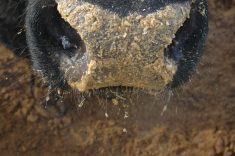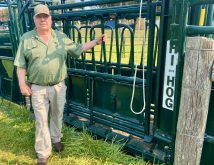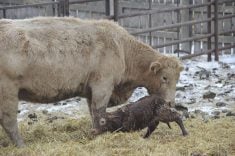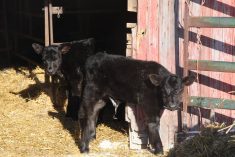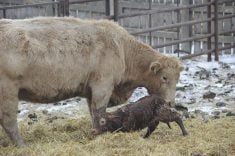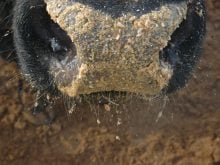Horns are an asset in the Longhorn, Watusi and Scotch Highlander breeds, but safe handling methods must be found
The handling of horned cattle requires special considerations.
Longhorn, Watusi and Scotch Highlander breeds, as well as yaks, can have horns that aren’t easily accommodated in regular cattle chutes.
Thus, there are specially designed chutes that are safer for the animals and the people handling them.
They include simple panels with horizontal bars so the horns can’t get caught, with side squeeze and no head catch, or “cages” with a side entry and exit that allow horns to slide in.
The newer chutes have palpation gates front and back, drop-downs on both sides for branding, plus a horn-lock system that can be added.
Joe Sedlacek of Lazy J Longhorns near Greenleaf, Kansas, has raised Longhorns for more than 25 years.
“For the first 10 years we did what every other Longhorn rancher did when we had to confine and restrain one: squeezing the animal behind two gates or panels. But that never worked very well,” says Sedlacek.
“Then we bought a Longhorn chute that was popular on the market at the time, with no vertical bars. But you couldn’t stop the horns from swinging, and veterinarians didn’t like coming to work on an animal. We were always getting smacked in the face with a horn.
“We started hosting horn measuring events at our ranch, since we were a satellite for the national horn measurement contest. On one of those measuring days, a bull from somebody else’s ranch was in our chute and he picked it up and took off with it into the crowd, lunging into all those people. That was the last time we used that chute.”
Sedlacek called a welder, who helped him redesign the chute.
“I was telling him we needed to fix and change this and this, and he said, ‘why don’t you just build what’s in your head, instead of modifying somebody else’s chute?’ So, I drew it out on paper, showing how we wanted it, and he built my first prototype.
“We used that chute for almost 10 years here at the ranch and loved it, and every person who saw it wanted one like it. People started calling it the Joe chute. It was just a joke nickname but it stuck,” he said.
Sedlacek started making chutes and sold almost 100 in his first year.
“Selling them is easy. The challenge is getting them built. We sold more than 250 of them in four years of building chutes, but during COVID we didn’t get any built.”
The “Joe chute” has vertical bars to keep the horns from swinging, and the gates are offset so one gate swings one way and the other swings the opposite way.
“You can squeeze a 2,500-pound beef bull in it or a newborn calf and have it completely tight. This chute is very versatile, so a person doesn’t need to have two chutes anymore if they have other cattle besides Longhorns or some other horned breed.”
The unit also has branding bars that drop down for access.
“My local veterinarian bought one and he’s using it as his main chute at his vet clinic. It is bigger than a regular squeeze chute, and he uses it for everything, including Holstein cows that need to have C-sections, since it allows more room.
“Another thing that my chute has, that most of the other Longhorn chutes don’t have, is a floor. This is to prevent a chute ever being lifted up and carried off by an animal. They can never walk off with it. This also makes it portable. You don’t have to anchor or attach it to anything and you can put it at the end of any alleyway.”
Sedlacek doesn’t recommend it for bison, but several zoos are using the model to handle zebras, Watusi cattle, Scotch Highlanders and other exotic animals. In some species it eliminates the need for dart guns and tranquilizers.
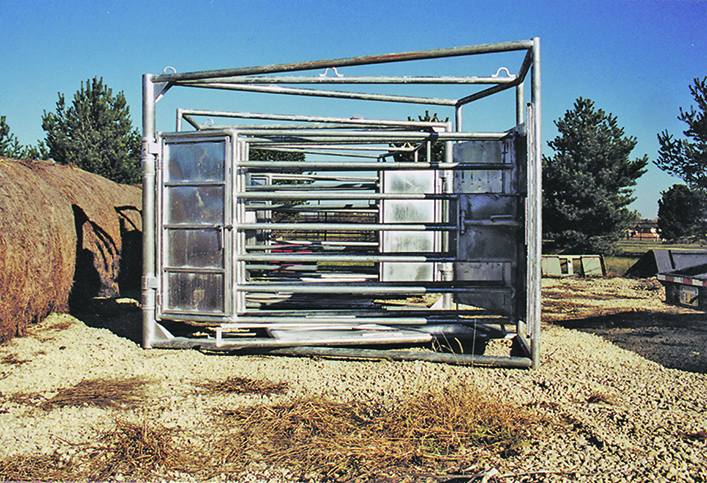
The chute has also been used for elk and horses. Veterinarians often sedate and anesthetize horses for castration but in this chute, a horse can be restrained rather than put under total anesthesia.
“We’ve sold chutes to private exotic ranches and to a commercial zoo — the Pueblo Zoo in Colorado. The main reason we built it in the first place was because I had a steer with horns that were approaching Guinness World Record status, and I could not afford to put him in a chute that might risk breaking a horn. We did end up with a world record and have pictures of the longest horned steer in the world,” says Sedlacek.
That steer was also chosen as one of only 10 world record holders for which Guinness sent a video crew to record the story.
Building the specialized chutes has become a full-time business, in addition to raising Longhorns.
“I never thought it would grow this much. I need to start hiring employees. Building chutes is completely different from raising cattle. It’s not as easy.”





